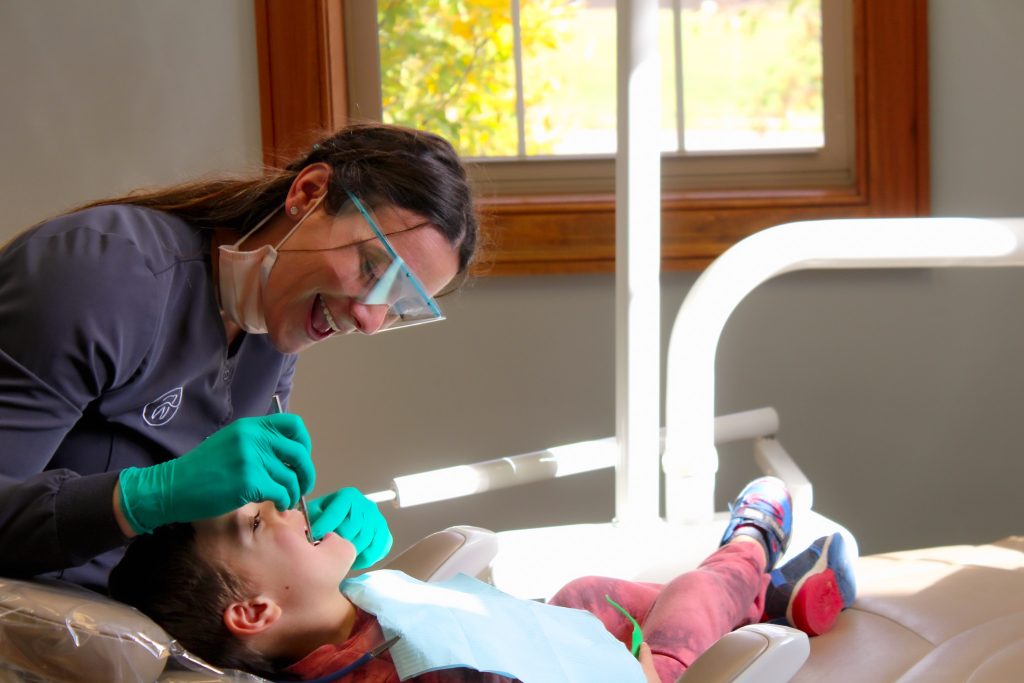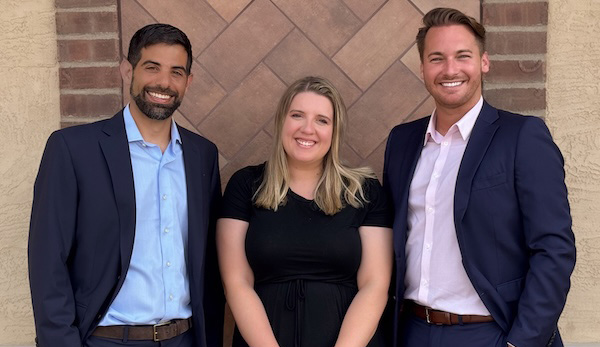Dental Sealants

Because your Anthony Dental Team knows that caring for your teeth is more than brushing and flossing daily, we proudly offer dental sealants to our Pediatric, teen, and adult patients. Dental sealants provide extra protection for your teeth, serving as a protective shield against decay.
What Are Dental Sealants?
Imagine a shield that protects the weak spots on your teeth. That’s what dental sealants do. They are thin, plastic coatings put on the chewing surfaces of your teeth, especially on the back teeth like molars and premolars. These back teeth have grooves and fissures that can trap food particles. Even if you brush regularly, cleaning these areas well can be challenging, leading to tooth decay, and dental sealants help address this problem. The sealant material covers the grooves and smooths the surface, making it hard for food particles and bacteria to stick. Sealants give your teeth an extra shield against decay, especially when combined with fluoride treatments.
How Dental Sealants Work to Protect Your Teeth
By filling the tiny spaces of your teeth, sealants help keep food particles from getting stuck and lower the growth of plaque-causing bacteria. This simple method dramatically reduces the risk of tooth decay. Additionally, dental sealants, as recommended by the American Dental Association (ADA), offer long-term protection. When applied, they can last for several years to help protect your teeth and support your oral health. Regular visits to Anthony Dental Care allow your dental team to check the sealant’s condition and suggest reapplying it whenever necessary.
Who Should Get Sealants?
Dental sealants are often linked to kids, but they can help people of all ages. This is true, especially for those more likely to get cavities. Children and teenagers are perfect for sealants when their permanent molars come in. The first molars usually appear around six years old, and the second ones appear around twelve, which can quickly decay.
Sealants also benefit teenagers and adults with deep grooves in their teeth, protecting those with deep grooves and fissures or when poor eating habits might play the important role of reducing the risk of decay. If you’re worried about tooth decay, talk to your dentist about dental sealants. They will examine your specific risk factors and see if sealants can help you.
The Step-by-Step Application Process at Anthony Dental Care
Applying dental sealants is a simple process. It usually follows these steps:
- Cleaning: The dentist cleans the tooth enamel well, removing plaque and debris.
- Etching: An acidic gel is applied briefly to the chewing surface, making it rough at a tiny level so the sealant will stick better.
- Rinsing & Drying: The gel is rinsed off, and the tooth is dried thoroughly.
- Sealant Application: The liquid sealant material is carefully added to the prepared tooth surface, filling the grooves and fissures.
- Curing: A curing light hardens the sealant and helps it stick firmly to the tooth enamel.
The process is usually painless and takes only a short time. Once the sealant hardens, it creates a protective shield over the tooth. This shield helps keep food particles and bacteria from settling in the grooves.
At What Age Are Dental Sealants Most Effective?
For children, the best time to use dental sealants is between six and fourteen years old, when their permanent molars, like the first and second molars, and baby teeth come in. The first molars usually appear around age six, and the second ones come around age twelve. These teeth are new, and their enamel is still developing, which makes them more vulnerable. Adding dental sealants during this time gives these teeth extra protection from decay.
Sealants are most beneficial when used early, but teens and adults can also benefit. People at high risk of tooth decay or without fillings or sealants should talk to their dentist about this preventive choice. Sealants are a simple way to help control diseases related to your mouth and an easy way to improve your oral health routine and create a healthier and brighter smile.
How Can I Maintain My Dental Sealants?
Brush and floss carefully to keep your dental sealants and overall dental care in good shape. You should also go to regular check-ups at Anthony Dental Care. During these visits, your hygienist will examine the sealant material on your chewing surfaces and let you know if you need a replacement.
Contact Anthony Dental Care today to learn more or schedule an appointment with one of our dentists.

 View Sunbury Location
View Sunbury Location View Centerburg Location
View Centerburg Location View South High Location
View South High Location




